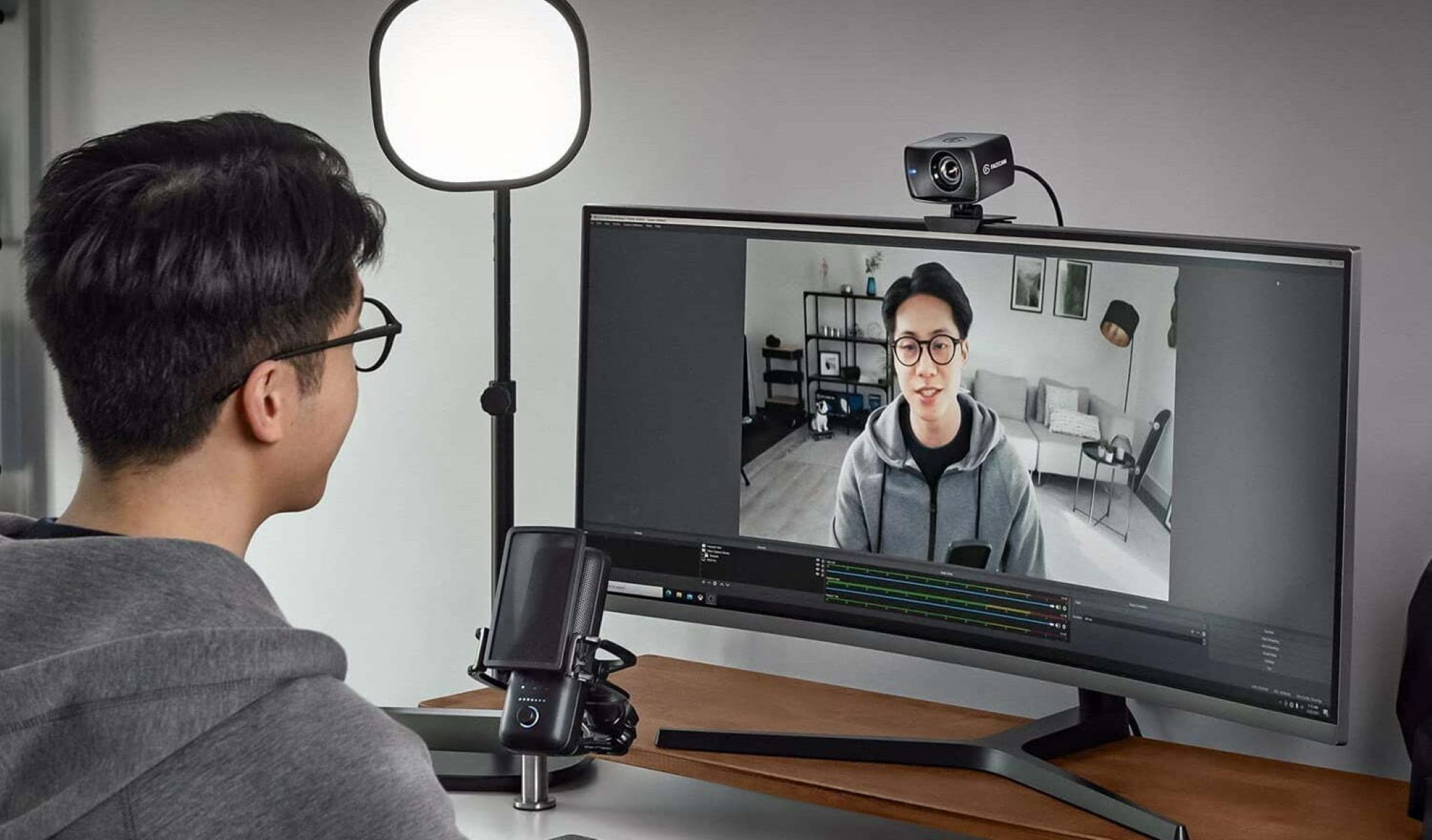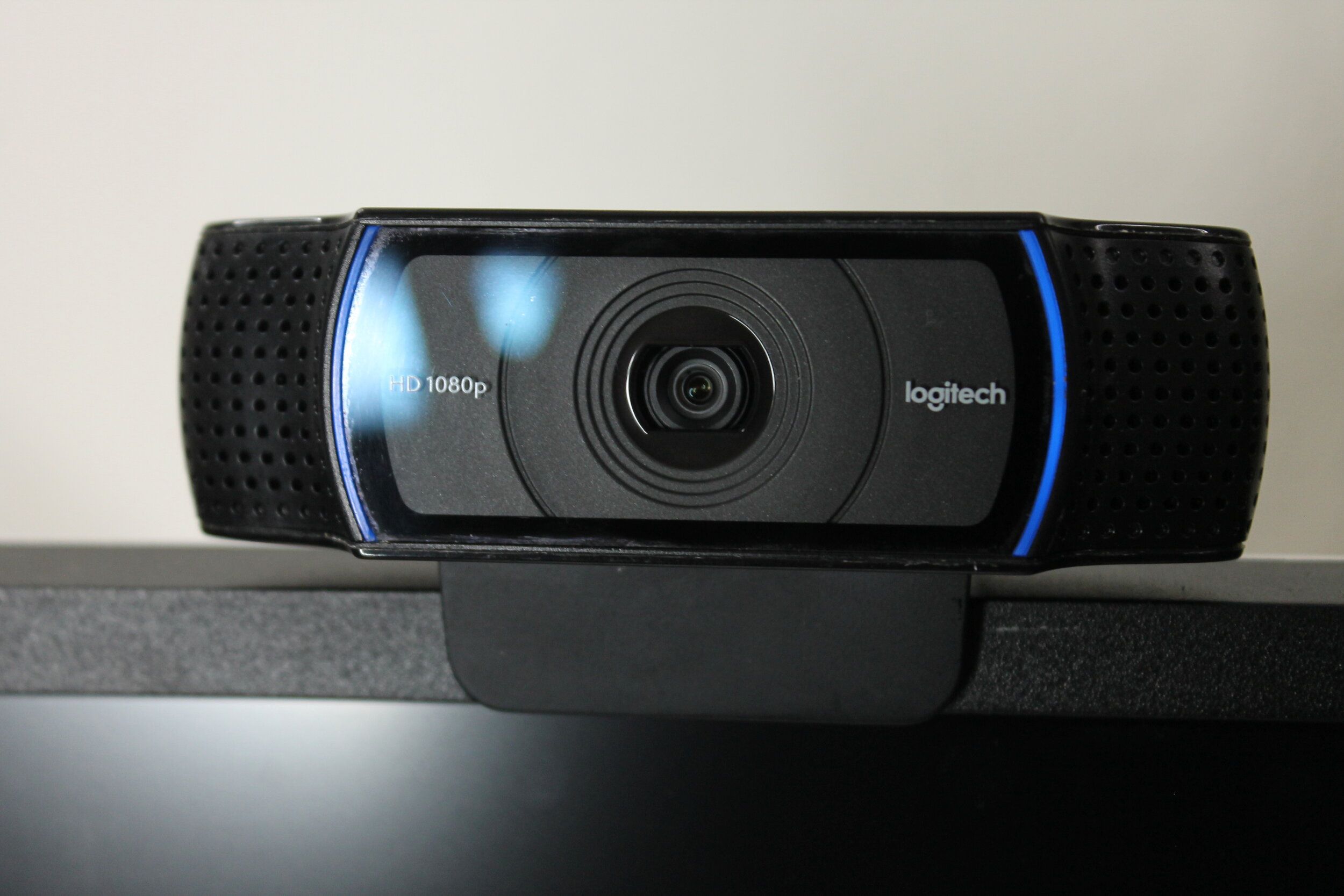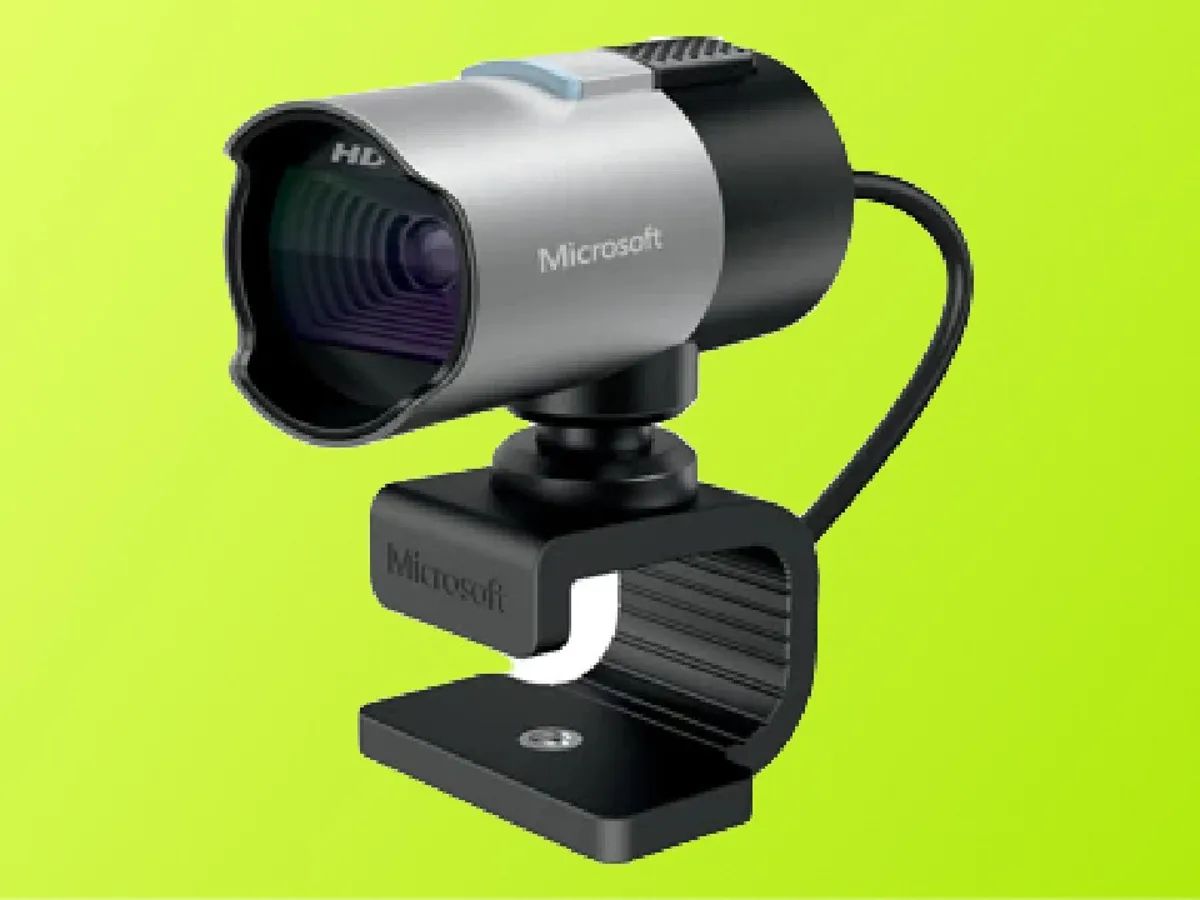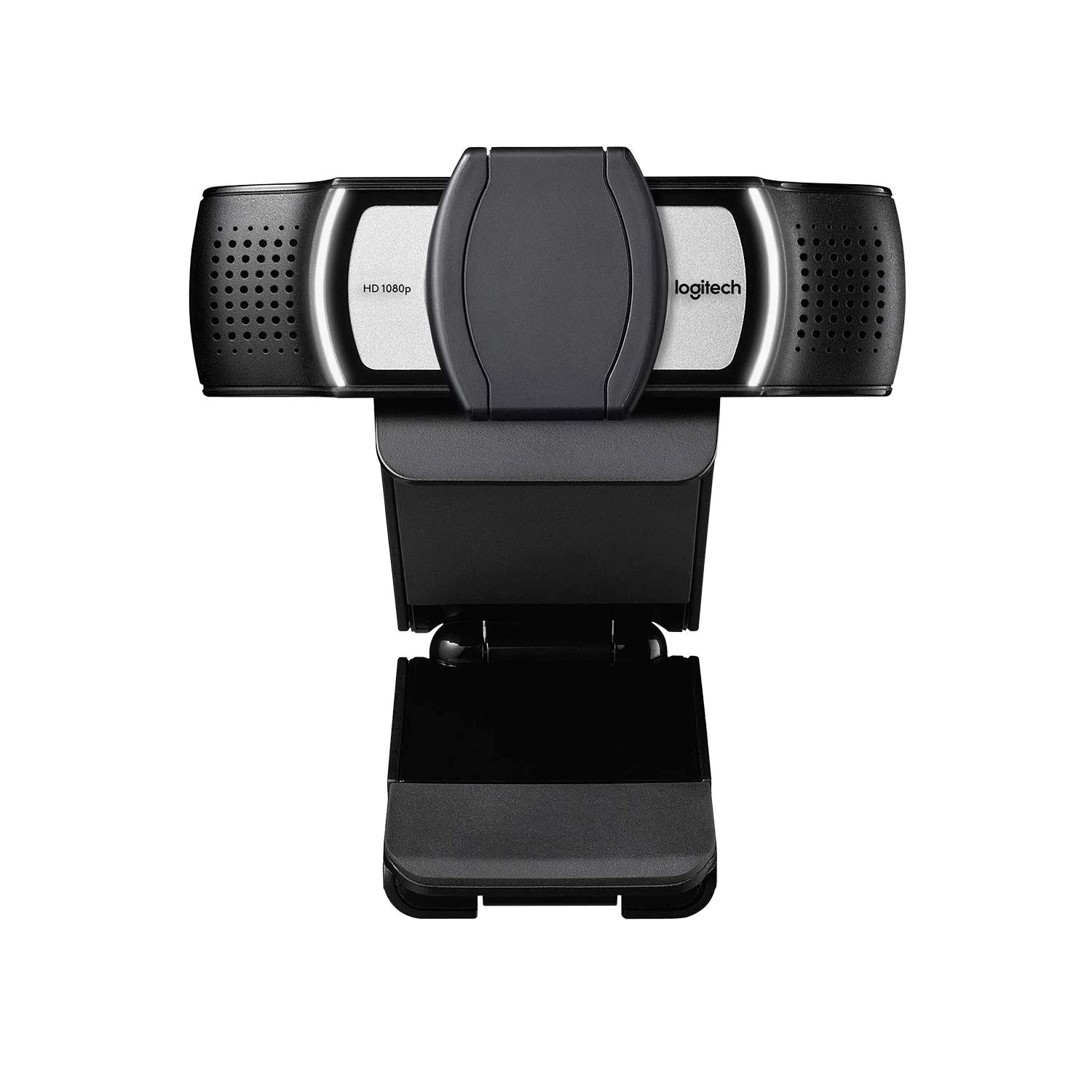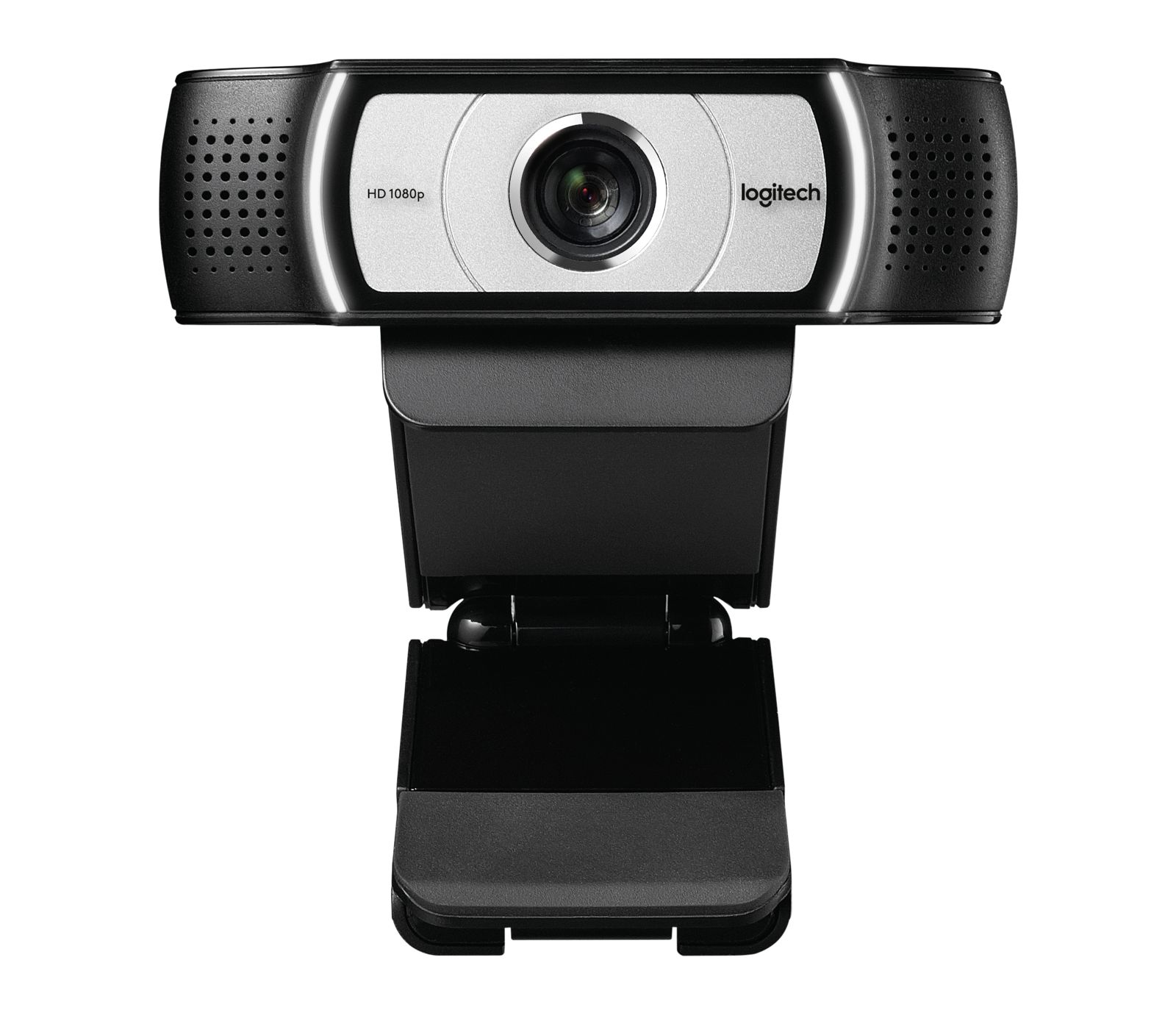Introduction
Welcome to the world of webcam business! As technology continues to evolve and online platforms gain popularity, starting a webcam business has become an attractive opportunity for individuals looking to work from the comfort of their own homes and make a lucrative income.
With the rise of video streaming and the growing demand for personal and interactive experiences, the webcam industry has seen significant growth in recent years. Whether you’re interested in adult entertainment, personal coaching, or providing educational content, there is a wide range of possibilities in the webcam business.
However, like any business venture, starting a webcam business requires careful planning, research, and consideration of various factors. From legal and safety considerations to equipment setup and promotion, there are several crucial steps to take to ensure a successful and profitable webcam venture.
This guide will take you through the essential aspects of starting a webcam business, providing you with valuable insights and practical advice that will help you kickstart your journey in this exciting industry. We will explore everything from researching the webcam industry and understanding legal and safety considerations, to setting up your webcam studio, choosing the right equipment, and promoting your business effectively.
In addition, we’ll discuss the importance of creating a positive and professional online presence, building a loyal fanbase, managing your finances and tax obligations, and prioritizing your safety and privacy in the webcam business.
By the end of this guide, you’ll have a comprehensive understanding of what it takes to start and run a successful webcam business. So, let’s dive in and explore the world of webcam entrepreneurship!
Researching the Webcam Industry
Before diving headfirst into starting your own webcam business, it’s crucial to conduct thorough research on the webcam industry. By gaining a deep understanding of the market landscape, trends, and customer preferences, you’ll be better equipped to make informed decisions and position your business for success.
Start by exploring different webcam platforms and identifying the niche or category that aligns with your interests, skills, and target audience. Is your expertise in adult entertainment, fitness coaching, language tutoring, or something entirely unique? Understanding your niche will help you tailor your content and marketing strategies accordingly.
Next, analyze the competition in your chosen niche. Who are the top performers? What sets them apart? Study their profiles, content offerings, and engagement with their audience. This will give you insights into what works and allow you to identify opportunities to differentiate yourself.
Additionally, familiarize yourself with the key features and tools offered by webcam platforms. Evaluate their payment structures, commission rates, and promotional capabilities. This will help you choose the platform that best suits your needs and maximizes your earning potential.
Conduct market research by engaging with your target audience. Participate in online communities, forums, and social media groups where your potential customers congregate. Listen to their needs, desires, and pain points. This direct feedback will allow you to tailor your content and offerings to meet their expectations.
Keep a close eye on industry trends and technological advancements. The webcam industry is constantly evolving, and staying up-to-date with the latest developments will give you a competitive edge. Attend industry conferences, webinars, and workshops to network with industry experts and gain valuable insights.
Remember, researching the webcam industry is an ongoing process. Continuously analyze market trends, monitor your competition, and listen to your audience to stay ahead of the curve.
By thoroughly researching the webcam industry, you will be equipped with the knowledge and understanding necessary to make informed decisions and effectively position yourself in the market. Taking the time to understand the landscape will set the foundation for a successful webcam business.
Understanding Legal and Safety Considerations
When starting a webcam business, it is crucial to have a solid understanding of the legal and safety considerations that surround the industry. By ensuring compliance with laws and prioritizing your safety, you can protect yourself, your business, and your customers. Here are some key aspects to consider:
Age Verification: Depending on the platform and the type of content you provide, there may be legal requirements to verify the age of your customers. Implement robust age verification processes to ensure that you are only interacting with customers who are of legal age.
Record-Keeping: Keep meticulous records of your transactions, as well as any agreements, releases, or consent forms you may need from your customers. These records will not only help you stay organized but can also serve as evidence in case of any disputes or legal issues.
Privacy and Data Protection: Ensure that you have a privacy policy in place that outlines how you collect, store, and handle customer data. Implement secure systems and protocols to protect sensitive information and comply with data protection laws.
Content Restrictions: Familiarize yourself with the content policies of the webcam platforms you work with. Different platforms may have varying restrictions on explicit content, nudity, or other potentially sensitive material. Adhere to these guidelines to avoid any potential violations that could lead to account suspension or legal consequences.
Intellectual Property: As you create content for your webcam business, be mindful of copyright and intellectual property laws. Do not use copyrighted material without permission, and consider trademarking your business name or logo for added protection.
Physical Safety: Take measures to ensure your physical safety and security while operating your webcam business. Never disclose personal information like your address or full name to customers, and consider using a pseudonym or stage name instead.
Online Safety: Protect yourself from online harassment or stalking by implementing privacy settings on your social media profiles and webcam platforms. Regularly review your online presence and remove any personal information that could compromise your safety.
Legal Advice: Consult with a legal professional who specializes in the webcam industry to ensure that you are operating within the bounds of the law. They can provide valuable guidance on compliance, contracts, intellectual property, and other legal matters specific to your business.
Understanding the legal and safety considerations in the webcam industry is crucial for the long-term success and sustainability of your business. By prioritizing compliance and taking necessary precautions, you can protect yourself and your customers and establish a trustworthy and reputable webcam business.
Setting Up Your Webcam Studio
Setting up your webcam studio is a crucial step in starting your webcam business. Your studio serves as the backdrop for your content and plays a significant role in attracting and engaging your audience. Here are some key considerations when setting up your webcam studio:
Space and Privacy: Choose a dedicated space in your home that provides privacy and a professional atmosphere. Ensure that the space is free from distractions and has sufficient lighting and ventilation.
Background and Props: Create an appealing and visually pleasing background for your webcam sessions. You can use colorful backdrops, artwork, or even props that align with your niche. Experiment with different arrangements to find a setup that enhances your content.
Lighting: Invest in quality lighting equipment to ensure that your video quality is clear and well-lit. Proper lighting can significantly enhance the overall appearance of your webcam sessions and make a lasting impression on your viewers.
Camera Setup: Choose a high-quality webcam or digital camera that can capture sharp and clear images. Opt for a camera that offers adjustable settings to fine-tune the video quality according to your requirements.
Audio Quality: Good audio quality is essential for an engaging webcam session. Invest in a high-quality microphone or headset to ensure that your voice comes through loud and clear, minimizing any distractions or background noise.
Internet Connection: A stable and fast internet connection is paramount in the webcam business. Ensure that your internet service provider offers sufficient bandwidth to support uninterrupted streaming and video calls.
Computer Setup: A reliable and powerful computer is essential for smooth webcam sessions. Invest in a computer that can handle the demands of video streaming and offers ample storage for your content.
Furniture and Seating: Choose comfortable and ergonomic furniture for your studio setup. A supportive chair and a well-designed workstation will ensure that you can maintain a good posture and work comfortably during your sessions.
Equipment Organization: Keep your equipment organized and easily accessible. Use cable management solutions and storage options to maintain a clutter-free and professional appearance in your studio.
Test and Adjust: Before launching your webcam business, test your equipment and make any necessary adjustments. Conduct trial sessions to ensure that everything is functioning properly and to familiarize yourself with the technical aspects of your setup.
By carefully setting up your webcam studio, you can create a professional and visually appealing environment for your webcam sessions. A well-equipped and thoughtfully arranged studio will not only enhance the quality of your content but also provide a positive experience for your audience.
Purchasing the Right Equipment
Investing in the right equipment is crucial for delivering high-quality webcam sessions and providing an exceptional experience for your audience. While the specific equipment you need will depend on your niche and budget, here are some essential considerations when purchasing equipment for your webcam business:
Webcam or Camera: The webcam or camera you choose is the cornerstone of your equipment setup. Look for a high-resolution camera that can capture clear and crisp video footage. Consider features like autofocus, low-light performance, and adjustable settings to enhance the quality of your videos.
Microphone or Headset: Good audio quality is equally important as video quality. Invest in a high-quality microphone or headset to ensure your voice comes through clearly to your audience. Avoid background noise and echo by using a microphone that offers noise cancellation features.
Lighting Equipment: Proper lighting is key to creating a professional and visually appealing webcam setup. Invest in lighting equipment like ring lights, softboxes, or light panels to ensure your face is well-illuminated and shadows are minimized. Experiment with different lighting setups to find the one that works best for you.
Green Screen: If you want to create a more customizable and versatile background, consider purchasing a green screen. This allows you to replace the background with virtual sets or images during your webcam sessions, adding an extra level of creativity to your content.
Computer and Processing Power: Choose a reliable and powerful computer that can handle the demands of streaming and video editing. Look for a computer with sufficient RAM, a fast processor, and ample storage space to ensure smooth performance during your sessions.
Internet Connection: A stable and fast internet connection is essential for seamless webcam sessions. Consider upgrading your internet plan or investing in a wired connection to ensure a consistent and reliable connection. This will minimize lags and buffering during your live streams.
Additional Accessories: Depending on your niche and content style, you may need additional accessories such as tripods, camera mounts, and external monitors. These accessories can improve stability, flexibility, and overall production quality.
Budget Considerations: While it’s important to invest in quality equipment, consider your budget and prioritize the equipment that will have the most significant impact on your content delivery. Allocate funds accordingly to ensure a balanced and effective equipment setup.
Remember, equipment preferences and requirements may vary depending on your niche and personal preferences. Take the time to research and read reviews to find equipment that aligns with your specific needs while staying within your budget.
Purchasing the right equipment will elevate the quality of your webcam sessions and help you create a professional and engaging experience for your audience. By investing in the essential equipment, you’ll be ready to deliver exceptional content that stands out in the competitive webcam industry.
Choosing the Right Webcam Platform
Choosing the right webcam platform is a critical decision that will have a significant impact on the success of your webcam business. With numerous platforms available, it’s important to consider several factors before making your choice. Here are some key considerations when selecting a webcam platform:
Target Audience: Consider the demographics and preferences of your target audience. Research which platforms are popular among your potential customers and which ones cater specifically to your niche. Understanding your audience will help you align your content and marketing efforts effectively.
Payout Structure: Review the payout structure of different platforms. Look for platforms that offer competitive commission rates and transparent payment systems. Consider how frequently and through which methods you will receive your earnings.
Platform Features: Evaluate the features and tools that each platform offers. Look for options such as private shows, tipping, fan clubs, or group chats, depending on your preferred content style and revenue streams. Consider how these features align with your business goals.
Platform Policies: Familiarize yourself with the content policies and guidelines of each platform. Ensure that the platform allows the type of content you want to provide and that it aligns with your personal boundaries and comfort level.
Privacy and Security: Consider the level of privacy and security provided by each platform. Look into their policies on data protection, customer information, and account security. A secure platform will ensure that your personal and customer data is safely handled.
Support and Community: Research the quality of support provided by each platform. Look for platforms that offer responsive customer support, detailed documentation, and active communities or forums where you can connect with other webcam performers.
Platform Reputation: Read reviews and testimonials from other webcam performers to gauge the reputation and credibility of each platform. Look for platforms with a positive track record and a strong presence in the webcam industry.
Terms and Conditions: Carefully review the terms and conditions of each platform. Look for any exclusivity clauses, restrictions, or policies that may impact your ability to work with other platforms or promote your webcam business independently.
Platform Promotion: Consider the promotional capabilities offered by each platform. Look for platforms that provide marketing tools, featured profile options, or opportunities to gain exposure within the platform’s community. These promotional features can give your business a valuable boost.
User Experience: Take the time to explore and test the user interfaces of different platforms. Consider how easy and intuitive it is to navigate, manage your profile, interact with customers, and access analytics and performance metrics.
By carefully evaluating these factors, you can select the webcam platform that best aligns with your business goals, target audience, and content style. Remember that you’re not limited to just one platform, and experimenting with multiple platforms can help you diversify your income streams and expand your reach in the webcam industry.
Promoting Your Webcam Business
Promoting your webcam business is crucial to attract and engage a loyal fan base and maximize your earning potential. While the webcam platform you choose will provide some exposure, implementing effective promotional strategies will help you stand out in a competitive industry. Here are some key methods for promoting your webcam business:
Create a Compelling Profile: Your profile is your online business card. Craft a captivating and informative profile that highlights your unique selling points, niche expertise, and the benefits customers can expect from your sessions. Use attractive visuals and well-written descriptions to make a lasting impression.
Utilize Social Media: Leverage the power of social media platforms to reach a wider audience. Create accounts on popular platforms like Twitter, Instagram, or TikTok to share teasers, behind-the-scenes content, and updates about your webcam sessions. Engage with your followers and use relevant hashtags to increase your visibility.
Create Engaging Content: To attract and retain viewers, focus on creating high-quality and engaging content. Experiment with various formats, such as live streaming, recorded videos, or exclusive content for paying subscribers. Tailor your content to meet the preferences and desires of your target audience.
Collaborate with Others: Collaborate with other webcam performers or influencers in your niche to expand your reach. Consider guest appearances in each other’s show or cross-promotion on social media. Collaborations can expose you to a new audience who may be interested in your content.
Offer Incentives and Specials: Attract customers by offering incentives, such as discounted rates for new customers, loyalty programs, or limited-time specials. These promotional offers can entice potential customers to try your services and encourage repeat business.
Engage with Your Audience: Build a loyal fan base by actively engaging with your audience. Respond to messages, comments, and direct inquiries promptly. Consider offering personalized shows or interacting with viewers during live sessions to create a sense of connection and exclusivity.
Run Contests and Giveaways: Running contests or giveaways can generate buzz and increase your visibility. Encourage viewers to participate by offering exclusive content, merchandise, or free sessions as prizes. Utilize social media platforms or your webcam platform’s features to organize and promote the contests.
Invest in Online Advertising: Consider investing in online advertising to reach a wider audience. Platforms like Google Ads, social media ads, or targeted banner ads on relevant websites can help drive traffic to your profile and increase your chances of attracting potential customers.
Network within the Webcam Community: Attend industry conferences, webinars, or virtual events to network with other webcam performers and industry professionals. Engaging with others in the community can provide opportunities to learn, collaborate, and gain exposure within the industry.
Solicit Customer Reviews and Testimonials: Encourage satisfied customers to leave reviews and testimonials about their experience with your webcam business. Positive reviews can build trust and credibility, influencing potential customers to choose your services over your competitors.
Promoting your webcam business requires a combination of creativity, consistency, and strategic planning. Experiment with different promotional methods, track your results, and refine your strategies based on what works best for your target audience. With consistent effort, you can attract a loyal fan base and establish a strong presence in the webcam industry.
Creating a Positive and Professional Online Presence
Creating a positive and professional online presence is essential for building trust, establishing credibility, and attracting loyal customers to your webcam business. As you engage with your audience and promote your services, here are key strategies to ensure a positive and professional online presence:
Consistency and Authenticity: Be consistent in your branding and messaging across all online platforms. Use a professional username or stage name that reflects your brand identity. Maintain a genuine and authentic approach in your interactions, allowing your personality to shine through.
Professional Profile Imagery: Use high-quality profile pictures and cover images that are visually appealing and representative of your brand. Avoid using explicit or misleading imagery that may hinder your professional image.
Thoughtful and Engaging Content: Create valuable and engaging content that offers insights, entertains, or educates your target audience. Tailor your content to their interests and needs, demonstrating your expertise and professionalism.
Positive Interaction and Customer Service: Interact with your audience in a positive and respectful manner. Respond promptly to messages, comments, and inquiries, and address any concerns or issues professionally. Offer exceptional customer service to foster a loyal and satisfied customer base.
Avoid Controversial or Offensive Topics: Steer clear of controversial or offensive topics that could alienate or offend your audience. Maintain a neutral stance and focus on delivering content that is inclusive, respectful, and enjoyable for a wide range of viewers.
Monitor Your Online Reputation: Regularly monitor your online presence and reputation. Set up Google Alerts or use reputation management tools to stay informed about mentions of your brand. Respond proactively to any negative feedback or reviews to maintain a positive image.
Deliver on Promises: Follow through on any promises or commitments you make to your audience. Whether it’s delivering exclusive content, honoring rewards or prizes, or providing exceptional customer service, consistently meet or exceed their expectations.
Collaborate and Support Others: Foster a positive image by collaborating with other professionals in your industry and supporting their work. Engage in cross-promotion, mutual shout-outs, or collaborations that benefit both parties and the overall community.
Seek Continuous Improvement: Strive for continuous improvement in your skills, content quality, and customer experiences. Keep up with industry trends, gather feedback from your audience, and be open to refining your approach to better serve your customers.
Educate Your Audience: Share your expertise and knowledge through tutorials, informative videos, or blog posts. By providing valuable information, you position yourself as a trusted authority in your niche and build credibility among your audience.
Creating a positive and professional online presence requires consistent effort and a commitment to delivering exceptional experiences to your audience. By nurturing a trustworthy and authentic image, you can attract a loyal fan base, build your reputation, and thrive in the competitive webcam industry.
Building a Loyal Fanbase
Building a loyal fan base is crucial for long-term success in the webcam industry. A loyal fan base not only provides consistent support and revenue but also acts as a strong foundation for growing your business. Here are key strategies for building and nurturing a loyal fan base:
Consistent and Quality Content: Regularly provide high-quality, engaging, and unique content that resonates with your target audience. Strive for consistency in your content schedule, ensuring that your fans know what to expect and when to expect it.
Interact and Engage: Foster a personal connection by encouraging interaction with your fans. Respond promptly to their comments, messages, and inquiries. Engage them during livestreams, addressing them by name, and making them feel valued and appreciated.
Create a Strong Brand Identity: Develop a strong and authentic brand identity that distinguishes you from competitors. This includes your stage name, logo, visual elements, and the overall tone and style of your content.
Offer Exclusive Content: Provide exclusive content, perks, or rewards to your loyal fans. This can include private shows, personalized messages, special fan-only videos, or access to a private community. Rewarding their loyalty will make them feel special and encourage them to continue supporting your business.
Run Contests and Giveaways: Organize contests or giveaways to incentivize engagement and reward your fans. This can be done through social media platforms or within your webcam platform. Offering prizes or free sessions as rewards encourages participation and cultivates a sense of excitement and appreciation.
Appreciate and Acknowledge Your Fans: Show genuine appreciation for your fans. Acknowledge their contributions, support, and loyalty publicly. Highlight fan art or messages during livestreams, give shout-outs, or send personalized thank you messages. This makes your fans feel recognized and valued.
Be Relatable and Transparent: Allow your fans to get to know the real you. Share relatable stories, personal experiences, and behind-the-scenes glimpses into your life. Being authentic and transparent helps build trust and a deeper connection with your audience.
Collaborate with Fans and Industry Professionals: Collaborate with fans or other webcam performers to involve them in your content creation process. This can be done through guest appearances, co-hosting livestreams, or creating content together. By involving your fans, you make them feel like a part of your community.
Offer a Variety of Payment Options: Provide multiple payment options to accommodate different preferences. This can include credit cards, cryptocurrencies, or alternative payment methods specific to your webcam platform. Making it easy for fans to support you increases their likelihood of doing so.
Seek Feedback and Act on It: Regularly seek feedback from your fans regarding their preferences, suggestions, and ideas. Show that you value their input by implementing changes or improvements based on the feedback you receive. This not only strengthens their loyalty but also demonstrates your commitment to providing them with the best experience.
Building a loyal fan base takes time, effort, and a genuine connection with your audience. By consistently delivering quality content, fostering engagement, and acknowledging and appreciating your fans, you can cultivate a strong and loyal community that supports your webcam business for the long haul.
Managing Finances and Tax Obligations
Managing your finances and understanding your tax obligations are essential aspects of running a webcam business. By keeping track of your earnings, properly managing expenses, and meeting your tax obligations, you can ensure the financial health and compliance of your business. Here are key considerations for managing finances and tax obligations:
Separate Business and Personal Finances: Open a separate bank account and credit card specifically for your webcam business. This separation makes it easier to track income and expenses, ensuring accurate financial records and simplifying tax preparation.
Track Your Earnings and Expenses: Keep detailed records of all your earnings and business-related expenses. This includes webcam session income, tips, affiliate commissions, equipment purchases, marketing expenses, and any other costs directly associated with your business.
Organize Receipts and Invoices: Maintain a system to organize receipts and invoices for all business-related transactions. This will help in accurately calculating your income and expenses for tax purposes and serve as supporting documentation in case of an audit.
Deductible Expenses: Familiarize yourself with the tax regulations in your jurisdiction to identify deductible expenses for your webcam business. These may include equipment purchases, internet and phone bills, marketing expenses, professional development, and home office deductions for the space used as your webcam studio.
Consider Professional Accounting Assistance: If you’re unsure about managing your finances or navigating tax obligations, consult with a qualified accountant or tax professional. They can guide you through tax rules and regulations specific to the webcam industry, ensuring accuracy and compliance.
Set Aside Money for Taxes: As a self-employed individual, you are responsible for paying taxes on your webcam business earnings. Estimate your tax liability and set aside a portion of your income to cover these obligations. It’s better to overestimate and have surplus funds than to be caught off guard by a large tax bill.
Understand Payment Processing Fees: Take into account the payment processing fees charged by your webcam platform or payment provider. These fees can impact your net income, so it’s crucial to factor them into your financial calculations and pricing structures.
Stay Updated on Tax Deadlines and Regulations: Keep track of tax deadlines and ensure timely submission of your tax returns and payments. Stay informed about any changes in tax regulations or deductions that may impact your webcam business.
Reinvest in Your Business: Consider reinvesting a portion of your earnings back into your webcam business. This can include upgrading equipment, marketing campaigns, professional development, or expanding your content offerings. Reinvestment can fuel growth and improve the overall success of your business.
Maintain Financial Discipline: Develop good financial habits by maintaining discipline in budgeting and spending. Avoid frivolous expenses and implement a savings plan to build a financial cushion for unexpected circumstances or business investments.
Managing your finances and tax obligations is crucial for the sustainable growth and compliance of your webcam business. By keeping accurate financial records, understanding tax regulations, and seeking professional guidance when necessary, you can ensure the financial health and longevity of your venture.
Staying Safe and Protecting Your Privacy
When operating a webcam business, it is essential to prioritize your safety and protect your privacy. The online nature of the industry brings unique risks, but by following best practices and implementing safeguards, you can ensure a secure and protected environment. Here are key strategies for staying safe and protecting your privacy:
Use a Pseudonym or Stage Name: Protect your real identity by using a pseudonym or stage name instead. By keeping your personal information separate from your webcam business, you minimize the risk of unwanted attention or potential harm.
Protect Personal Information: Be cautious about sharing personal information online, such as your address, phone number, or full name. Avoid posting specific details about your whereabouts or personal life that could compromise your safety.
Secure Your Webcam Studio: Treat your webcam studio as a private and secure space. Ensure that doors and windows are locked during sessions, and be vigilant about who has access to your work environment. Consider using security measures such as home security systems or additional locks for added peace of mind.
Implement Secure Passwords: Use strong and unique passwords for all your online accounts, including your webcam platform, email, and social media accounts. Avoid using easily guessable information, such as birthdates or pet names, and consider using a password manager to securely store your login credentials.
Enable Two-Factor Authentication: Activate two-factor authentication (2FA) wherever possible. This adds an extra layer of security by requiring a second verification step, such as a unique code sent to your phone, when logging into your accounts.
Exercise Caution with External Links: Be cautious when clicking on external links or downloading files from untrusted sources. Malicious links or downloads can expose your computer to viruses, malware, or phishing attacks. Verify the source and validity of links before engaging with them.
Monitor Webcam Sessions: Regularly monitor your webcam sessions to ensure a safe and respectful environment for yourself and your customers. Promptly address any inappropriate behavior or harassment. Familiarize yourself with the reporting and blocking features provided by your webcam platform to handle any incidents effectively.
Set Boundaries and Stick to Them: Determine your personal boundaries and limits for your webcam sessions. Communicate them clearly to your audience and enforce them consistently. Do not feel pressured to engage in activities or discussions that make you uncomfortable or violate your boundaries.
Be Wary of Potential Scams: Educate yourself on common scams in the webcam industry, such as fraudsters posing as potential customers or attempts to gain unauthorized access to your accounts. Stay vigilant, trust your instincts, and report any suspicious activities to the appropriate authorities or the platform’s support team.
Regularly Update Software: Keep your computer, webcam, and other software up to date with the latest security patches and updates. This helps protect against known vulnerabilities and ensures that you have the latest security features and protections.
Trust Your Instincts: Above all, trust your instincts and prioritize your safety. If something feels off or makes you uncomfortable, remove yourself from the situation. Your well-being is paramount, and maintaining a safe and secure environment is crucial for your success in the webcam business.
By implementing these practices and making safety a priority, you can protect your privacy, establish boundaries, and create a secure environment for both yourself and your customers in the webcam industry.
Conclusion
Starting a webcam business offers a unique opportunity to work from home, tap into a growing market, and build a thriving online venture. By following the crucial steps outlined in this guide, you can set yourself up for success in the webcam industry.
Researching the webcam industry allows you to understand market trends, identify your niche, and position yourself effectively. Understanding legal and safety considerations ensures compliance, protects your privacy, and establishes a trustworthy reputation. Setting up a professional webcam studio with the right equipment and creating a positive online presence are key to attracting and engaging your audience.
Choosing the right webcam platform allows you to reach your target audience and maximize your earning potential. Promoting your webcam business through various strategies such as social media, collaborations, and engaging content drives visibility and fosters growth. Building a loyal fan base creates a community of dedicated supporters who contribute to your success.
Managing your finances and tax obligations ensures the financial health and compliance of your business. Taking steps to stay safe and protect your privacy keeps you secure in an online environment. By implementing these strategies and maintaining diligence, you can navigate the challenges of the webcam industry and build a thriving and sustainable business.
Remember, success in the webcam business takes time, effort, and continuous adaptation. Stay informed about industry trends, listen to your audience, and be willing to evolve with the changing landscape. Stay true to yourself, deliver valuable content, and prioritize your safety and privacy. With dedication and a customer-centric approach, you can build a rewarding and profitable webcam business.











